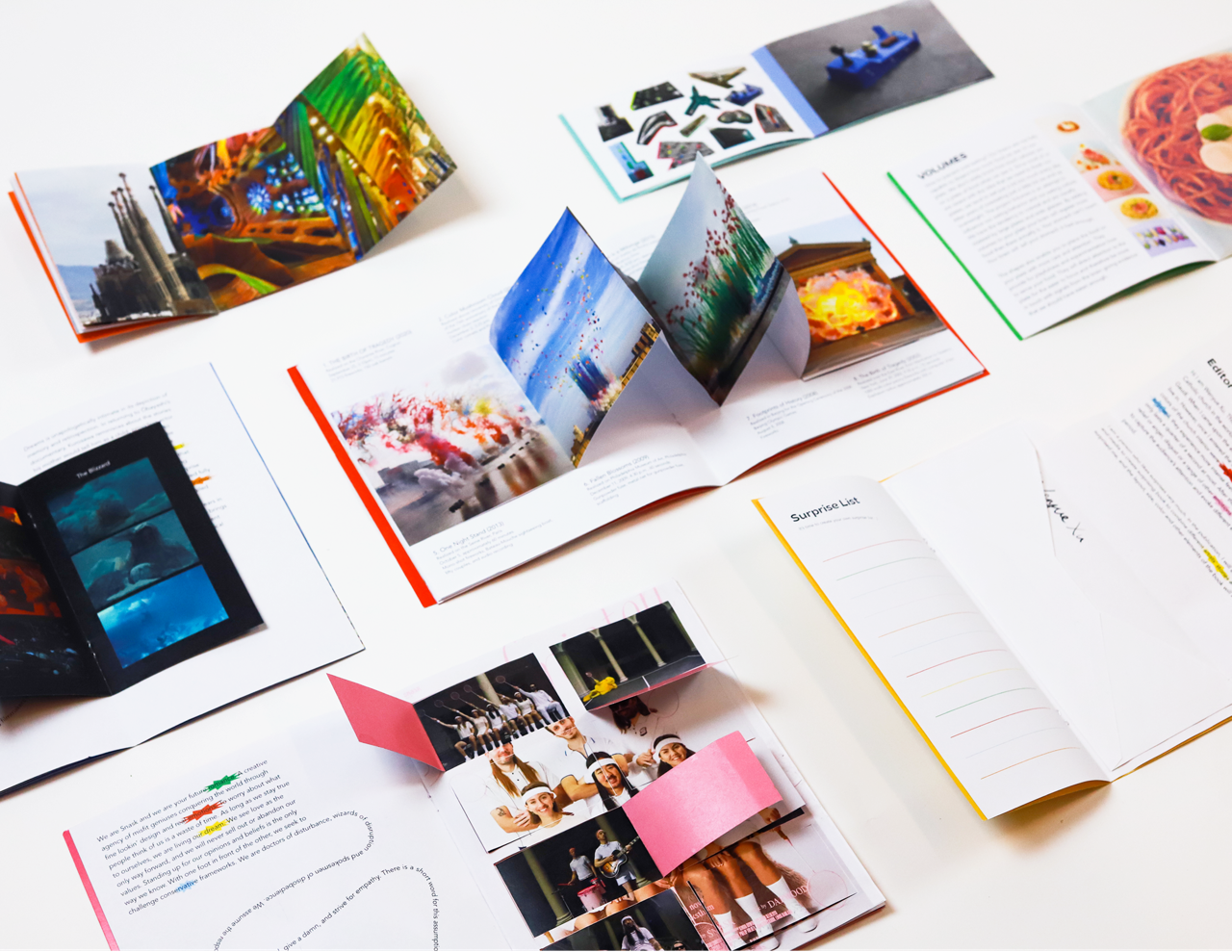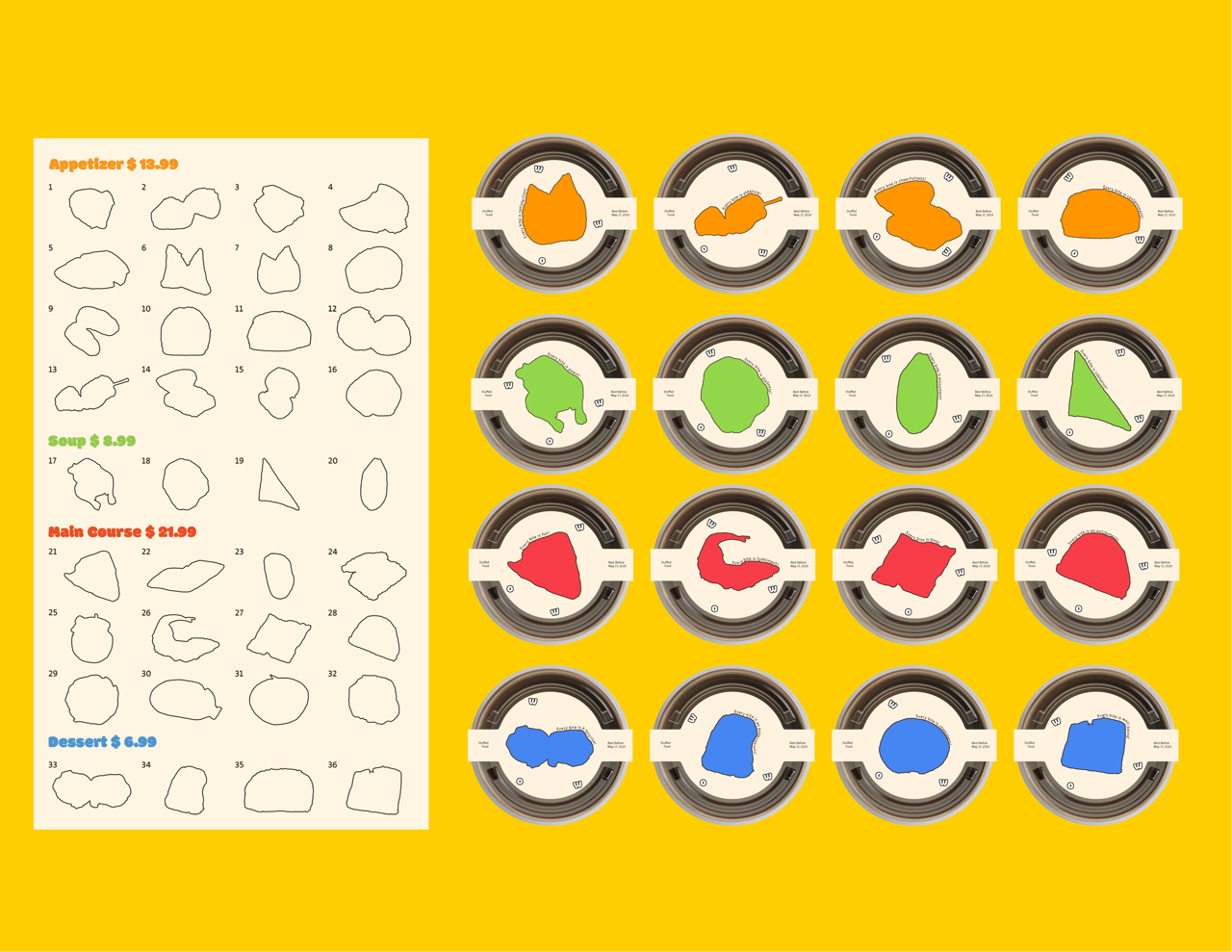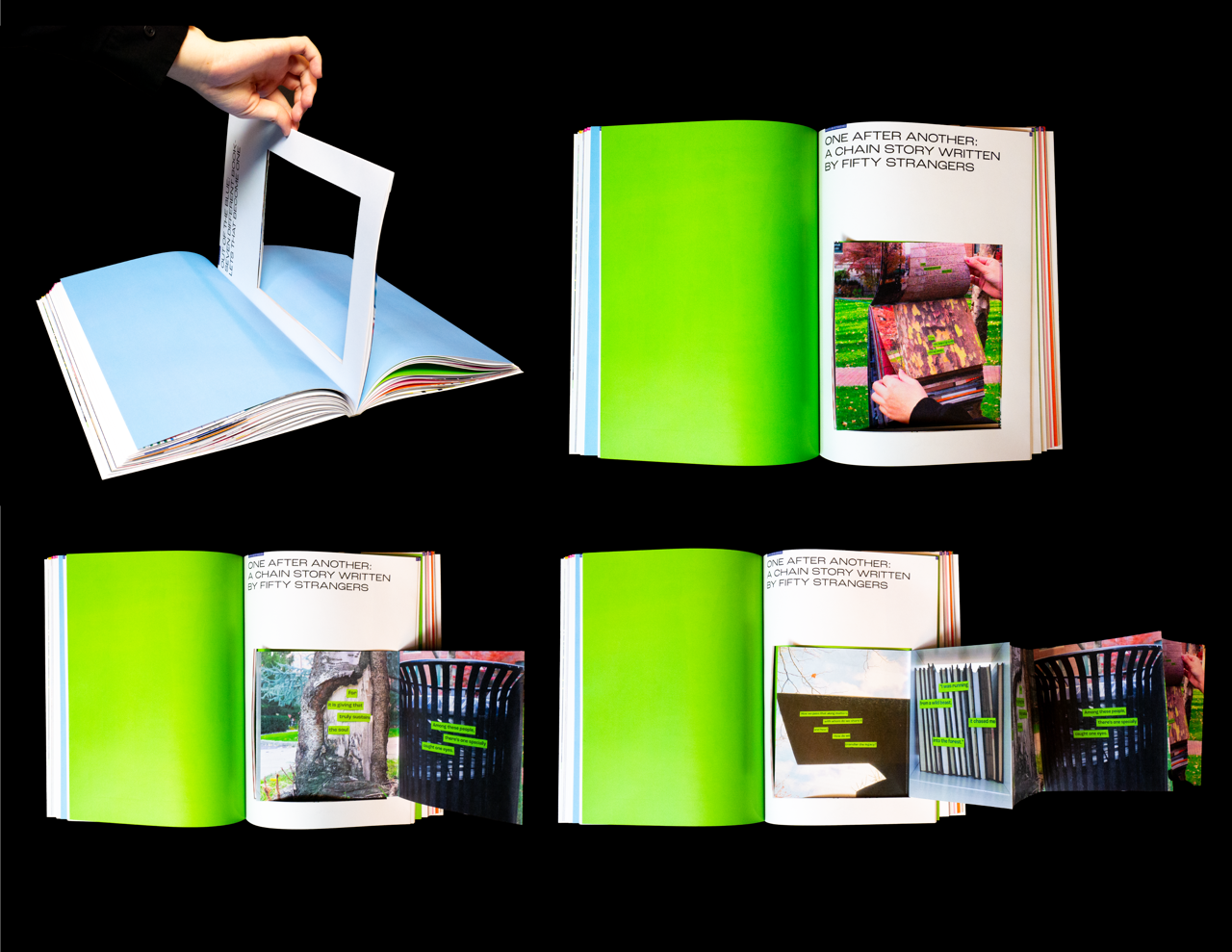Unexpectedness
Wenyue Xu
Life offers countless unexpected experiences. Positive surprises allow us to avoid repetitive boredom, whereas negative ones cause reflection about the past and the future. Both can inspire designers. This thesis aims to analyze how to use unexpectedness as a design strategy, which I will discuss in three aspects—multilayered complexity; creative thinking and innovation of materials, forms, and perspectives; and finally stimulation and balancing of different senses. These three aspects are represented by several visual works that I created for this project. As designers, we often encounter unexpected circumstances during the creative process, but if we consider them as possibilities, the unexpected may prompt us to reevaluate and push boundaries in our works.
Website: xuwenyue.co

Out of the Blue, Cover
Out of the Blue: seven different booklets that become one
Out of the Blue, Surprising pages
Out of the Blue: seven different booklets that become one
Out of the Blue, Layout
These publications are a collection of six artists' works that I consider to be unexpected:Architect and designer Antoni Gaudí, explosion artist Guoqiang Cai, food designer Marije Vogelzang, branding design agency SNASK studio, contemporary visual and performance artist Mohammed Alani, and filmmaker and painter Akira Kurosawa. Their works are exploratory and experimental in terms of inspiration, form, content, and materials. The books provide a comprehensive introduction to their stories, creative process, works and their philosophy. The books use different design strategies to convey the concept of unexpectedness: unlike usual book covers, the cover is in the form of a puzzle which comes together to see the title; A dynamic typographical system is used here; the middle pages of each book use multilayering strategies related to the artists' own works to make them playful and surprising.Distorted Smell
The global impact of COVID-19 has been un- expected, as it has disrupted many aspects of daily life and caused widespread eco- nomic and social upheaval. COVID-19 can also make people feel unexpected because it is a highly infectious disease that can cause a wide range of symptoms. For example, ma- ny people’s smell is distorted, which is called parosmia. When I suffered it, I smelled all berries as peppers, which was an unexpected experience. Fortunately, my smell was back to normal after two weeks, but many people are still suffering from it. In fact, age, gender, and side effects of other ill- nesses can all act as triggers for parosmia. The project organized all the data from sixty investigations, which were different from genders, ages, back- grounds, countries, and so on. I recorded the day of people with Parosmia in a cheerful, humorous and fun attitude. From living, and eating, to hanging out, I transferred the smell of ordinary things into unusual or even un- pleasant smells via a visual and straight way. Audience could put themself in patients’ shoes to empathize with the pain and disappointment of people with Parosmia.
One After Another, Cover
One After Another: A chain story written by fifty strangers
One After Another
The publication is a chain story written by me and forty-nine random people in New York City. The rule I stated was to write the first sentence,and then the next person could read my previous sentence and continue to write one more, which provided an unexpected direction for the story. This method was based on the exquisite corpse developed by the Surrealists in 1925. I had this activity in different places in New York including Brooklyn, Queens, Manhattan. The participants were diverse in age, background, race, and education. Then, I printed the sentences and publicly displayed them for an entire day at Pratt Institute from the main gate into the Communication Design building. People who came to school would read the story and their reactions were documented in photographs as shown below. The paper used for printing was a bit rough and textured to provide a tactile experience. The design of the book used various paper sizes was from short to long, giving a visual surprise for the audience.
Wow! Kitchen: Branding design for stuffed food restaurant

Wow! Kitchen, Instagram Story
What kind of food has unexpected features? My answer is stuffed food as it often involves concealing additional ingredients or flavors within an unassuming exterior. People don't know what's inside when they only look at the outside. This surprise element can attract people off guard and make the dish more interesting and memorable. Additionally, the texture and taste contrasts between the stuffing and the outer layer can produce a distinctive and delightful dining experience. Having this in mind I developed a concept of a restaurant that exclusively serves a wide variety of stuffed dishes, from appetizers to entrees and even soup and desserts.The headline typeface used in this project is modak which is inspired by Indian stuffed food. The logo is the combination of contours of most of the stuffed food with the restaurant name. The overall design of the menu is also like stuffed food, which is divided into two parts: the dough and the stuffing. The dough part is only the shape, price, and number of the food. People do not know exactly what the dish is, which provides an unexpected dining experience; the stuffed part is the introduction of each dish like an answer book. Audience has the choice to know the answer or not.
Unexpectedness

Unexpectedness, Design Strategies
